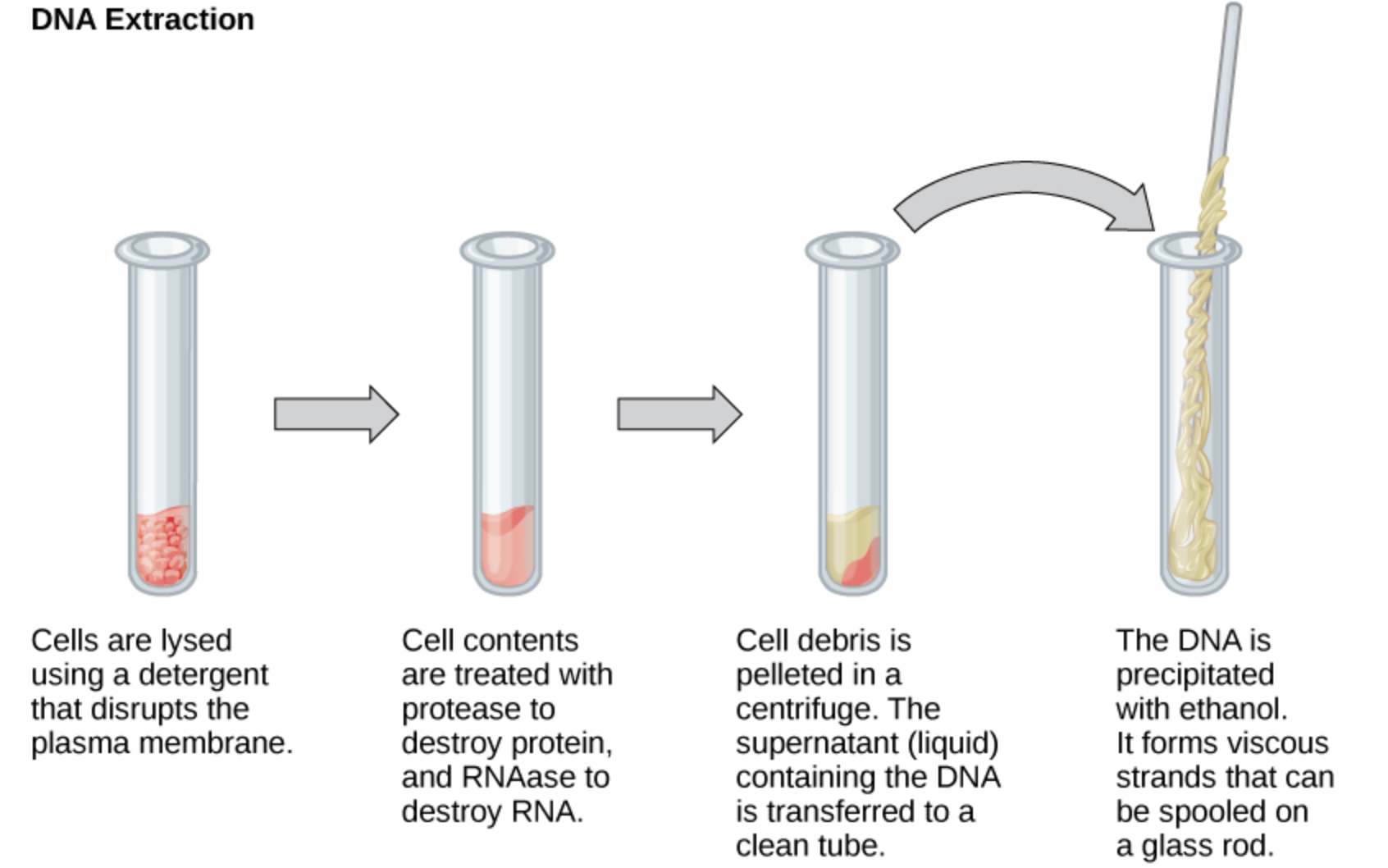
How is DNA isolated from prokaryotic and eukaryotic cells?
Answer
460.8k+ views
Hint: Both the prokaryotic and the eukaryotic cells consist of the DNA present in them. The DNA is extracted from the cells by carrying out various steps. DNA present is double-stranded and is so long that it is compressed in such a way that it can fit in the nuclear membrane of the cell.
Complete answer:
In the DNA isolation procedure, the sample from which DNA needs to be extracted is taken and the sample is made to undergo cell lysis. In this, the cell wall is broken down and then the sample ire made to centrifuge at high speed. The cell debris is removed through this process. After these proteins are denatured using protease. Then they are made to precipitate using the organic solvents in the ratio of 1:1 of a mixture of chloroform and phenol.

The precipitate is then removed using centrifugation. DNA can be obtained now by the precipitation of the ethanol at -20 degrees Celsius. At very low temperatures the DNA gets precipitated and then can be used for the further study. The microbes are first cultured to a level where they reach maximum density. The DNA isolation from the microbes can be done by lysing the cell using lysozyme or EDTA. Then the cell is removed by the centrifugation. The other steps are the same as done in the plant and animals’ cells.
Note: The lysis of cells using EDTA or lysozyme is necessary to help in the extraction of the DNA from the cell. The use of absolute ethanol should be only done at very low temperatures to facilitate the precipitation of the DNA.
Complete answer:
In the DNA isolation procedure, the sample from which DNA needs to be extracted is taken and the sample is made to undergo cell lysis. In this, the cell wall is broken down and then the sample ire made to centrifuge at high speed. The cell debris is removed through this process. After these proteins are denatured using protease. Then they are made to precipitate using the organic solvents in the ratio of 1:1 of a mixture of chloroform and phenol.

The precipitate is then removed using centrifugation. DNA can be obtained now by the precipitation of the ethanol at -20 degrees Celsius. At very low temperatures the DNA gets precipitated and then can be used for the further study. The microbes are first cultured to a level where they reach maximum density. The DNA isolation from the microbes can be done by lysing the cell using lysozyme or EDTA. Then the cell is removed by the centrifugation. The other steps are the same as done in the plant and animals’ cells.
Note: The lysis of cells using EDTA or lysozyme is necessary to help in the extraction of the DNA from the cell. The use of absolute ethanol should be only done at very low temperatures to facilitate the precipitation of the DNA.
Recently Updated Pages
Master Class 11 Accountancy: Engaging Questions & Answers for Success

Express the following as a fraction and simplify a class 7 maths CBSE

The length and width of a rectangle are in ratio of class 7 maths CBSE

The ratio of the income to the expenditure of a family class 7 maths CBSE

How do you write 025 million in scientific notatio class 7 maths CBSE

How do you convert 295 meters per second to kilometers class 7 maths CBSE

Trending doubts
Which are the Top 10 Largest Countries of the World?

Differentiate between homogeneous and heterogeneous class 12 chemistry CBSE

What is a transformer Explain the principle construction class 12 physics CBSE

Draw a labelled sketch of the human eye class 12 physics CBSE

What is the Full Form of PVC, PET, HDPE, LDPE, PP and PS ?

How much time does it take to bleed after eating p class 12 biology CBSE




